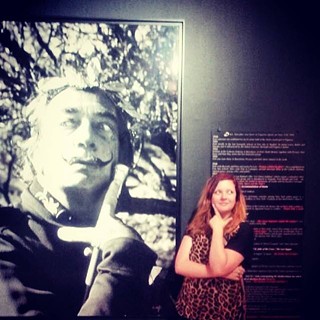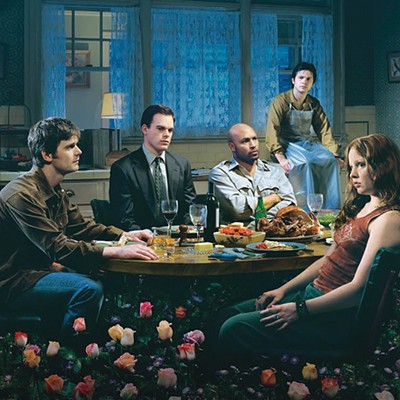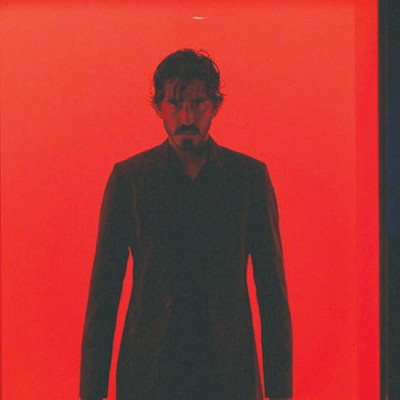Most actresses search for the role of a lifetime for their entire career; it doesn't often plop itself in their lap three times in three years. This was the case for Molly Ringwald when John Hughes cast her in the a trifecta of memorable teen films, Sixteen Candles, 1984, Breakfast Club, 1985, and Pretty in Pink, 1986—all before her 18th birthday.
Her roles as the misunderstood princess, the financially challenged fashion designer and the forgotten birthday girl immortalized her as a teenager, then and forever. They also made the name John Hughes shorthand for films about teen angst and suburban frustration, and put in place the notion of soundtracks as part of the narrative.
The success was no accident: Hughes chose Ringwald, and the collective Brat Pack, as his canvas to present his equal parts funny and dramatic versions of the teenage experience.
"I like young actors because they're so unspoiled," Hughes once explained. "Not like some of those actors who are about half an hour into their fifteen minutes of fame by the time they get to me."
As much as Ringwald and the so-called Brat Pack were encouraged to participate in the script, ad-libbing lines and suggesting changes while creating these legendary films, Hughes influenced the youngsters in equal force.
"In life, there is always that special person who shapes who you are, who helps to determine the person you become. For me, that person was John Hughes," Ringwald said in a 2009 obituary she wrote for the director. (In 2009, Hughes died at age 59 of a heart attack.)
Those three movies burned the image of Ringwald into pop-culture history as the pouty, eye-rolling, carrot stick-eating redhead, but it was also a finite collaboration. That stigma as an angsty teenager was one that Ringwald wanted to shake off as she tried to move forward in her career. Likewise, Anthony Michael Hall, who launched his career as Buddy in Hughes' first big film, Vacation, started turning down Hughes film roles—including the title character of Ferris Bueller's Day Off.
After the Brat Pack broke off, Hughes didn't slow down, but his films changed focus. His biggest film subsequent to the Molly movies was Ferris Bueller's Day Off, 1986, which certainly showcased a rule-bending teenager, but the character lacked the personal growth that made Sixteen Candles so endearing and The Breakfast Club so instructive. At the end of the film, Bueller is still a smug narcissist.
In his own attempt to break from the teenage genre, Hughes next big film was the comic pairing of John Candy and Steve Martin in Planes, Trains and Automobiles in 1987. His next big—HUGE—film was Home Alone, 1990, completely marking his break from probing deep emotional issues in exchange for nearly pure slapstick.
"None of the films that he made subsequently had the same kind of personal feeling to me," Ringwald said in a retrospective for the New York Times, referring to films Hughes made after her departure. "They were funny, yes, wildly successful, to be sure, but I recognized very little of the John I knew in them, of his youthful, urgent, unmistakable vulnerability. It was like his heart had closed, or at least was no longer open for public view."
The glorified alienation was gone. And in time, so was Hughes. By the mid-1990s he was writing under a pseudonym and was generally considered a Hollywood recluse, often called the J.D. Salinger of Generation X. In 1994, he moved from L.A. back to Chicago and generally stayed away from any publicity.
When Hughes died in 2009, Ringwald's obituary admitted that she hadn't spoken to the influential director in nearly 20 years.
Despite their later estrangement, the Hughes-Ringwald collaborations gave the world a frame of reference for examining the teenage psyche. While contemporary writers and filmmakers like J.K. Rowling and Suzanne Collins use the lens of fantasy to probe teen issues, Hughes rooted his case studies in reality, and that has been a testament to their staying power. Mentioning Molly Ringwald to anyone who was a teen during the Hughes era brings a dreamy glint to their eyes. Thanks to Hughes' writing, Ringwald's characters were real, not fantasies; they were never imbued with magical powers or set in a post-apocalyptic wasteland. Instead, Hughes wrote Ringwald to be the real deal, to be a friend, and that gave her the power to become an icon that people recognize nearly 30 years after her iconic forgotten 16th birthday.



















